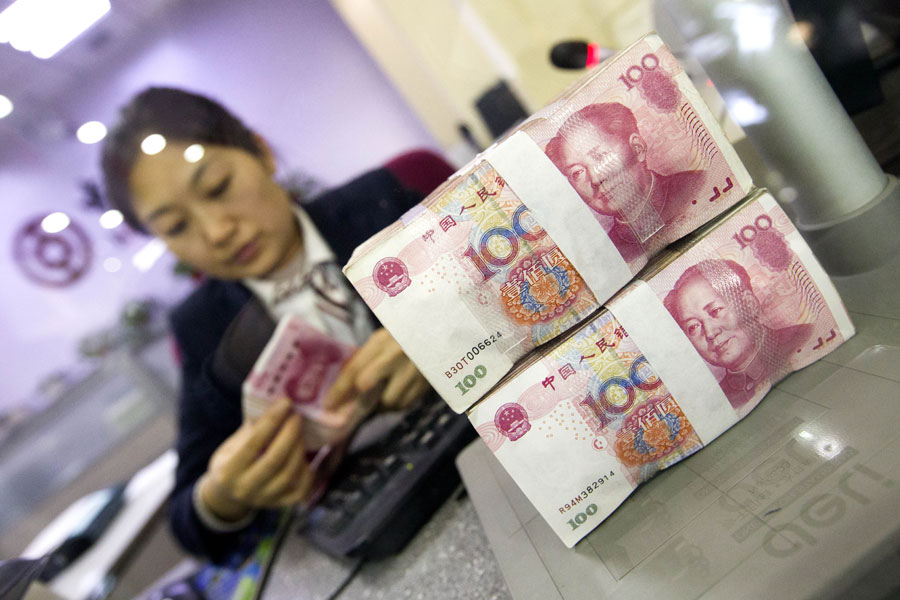China leverages financial toolkit to navigate economic headwinds


BEIJING - As it enters a new year, China's financial authority will continue to leverage its toolbox in an effective and flexible manner to support economic recovery and ward off risks, according to officials.
Fresh moves came on Monday as the People's Bank of China (PBOC) cut the interest rates of its medium-term lending facility (MLF) loans and reverse repos by 10 basis points, amid the country's efforts to lower lending costs for businesses and further shore up economic growth.
Specifically, the central bank lowered the rate of 700 billion yuan ($110 billion) worth of one-year MLF to financial institutions to 2.85 percent, compared with 2.95 percent on the previous operation. It also added 100 billion yuan of funds into the market via seven-day reverse repos at an interest rate of 2.1 percent, down from 2.2 percent.
With 500 billion yuan worth of MLF and 10 billion yuan worth of reverse repos maturing on the same day, the aforementioned moves led to a net liquidity injection of 290 billion yuan into the market.
Interest rate cuts can be considered a vital monetary policy tool among several employed by the central bank for steadying economic growth, and the cuts this time will have greater policy implications and influence than previous moves did, said Wen Bin, chief analyst at China Minsheng Bank.
The Chinese economy is still under downward pressure and in urgent need of effective measures, Wen said, adding that cutting interest rates at the beginning of this year meets the country's requirement to make monetary policy perform in advance, and the degree of such reductions signifies strengthened counter-cyclical adjustment.
Lian Ping, chief economist at Zhixin Investment Research Institute, said lowering the MLF interest rates, as a policy tool, will help increase mid- and long-term loans, and thereby optimize the country's loan structure.
This move will further reduce social financing costs and expand domestic demand to mitigate economic downward pressure, Lian said.
The country's multiple financial policy tools have remained active in bolstering the real economy over time, particularly under the current triple pressure of demand contraction, supply shocks and weakening expectations amid an increasingly complicated external environment.
In the second half of last year, for instance, the central bank reduced the reserve requirement ratio for financial institutions twice, with the two cuts injecting a total of 2.2 trillion yuan of long-term funds into the economy.
It has also increased the re-lending quota for small businesses by an additional 300 billion yuan, and lowered the one-year loan prime rate by 5 basis points.
More expected
Liu Guoqiang, deputy governor of the central bank, said that for its work in 2022, the institution will use various monetary policy tools to maintain liquidity at a reasonable and ample level, ensure stable credit growth, and guide financial institutions to increase the credit supply so as to ensure the money supply, while social financing expansion will basically match the nominal economic growth rate.
It will also implement market-based policy tools to support small and micro companies, and make good use of the supporting tools for carbon reduction and special reloans for the clean and efficient use of coal, said Liu.
Commenting on the average reserve requirement ratio for financial institutions, now standing at 8.4 percent, Liu said it is not high compared with its historical level or the level of other developing economies, and the room for further adjustment is quite small.
But he did not rule out the possibility of further adjustment in the future, adding that the central bank could adjust the ratio in light of China's economic and financial situation and macro-control needs.
Responding to the recent monetary policy adjustments by some major developed economies, central bank official Sun Guofeng said the Chinese economy has strong resilience, a stable financial system and a steady outlook for the yuan exchange rate. Instead of resorting to massive stimulus, it has made full use of cross-cyclical adjustment and maintained reasonable and ample liquidity in the market.
All these factors can help the economy mitigate and handle external risks, Sun said, adding that developed economies' policy adjustments will generally have a "limited impact" on China.



































